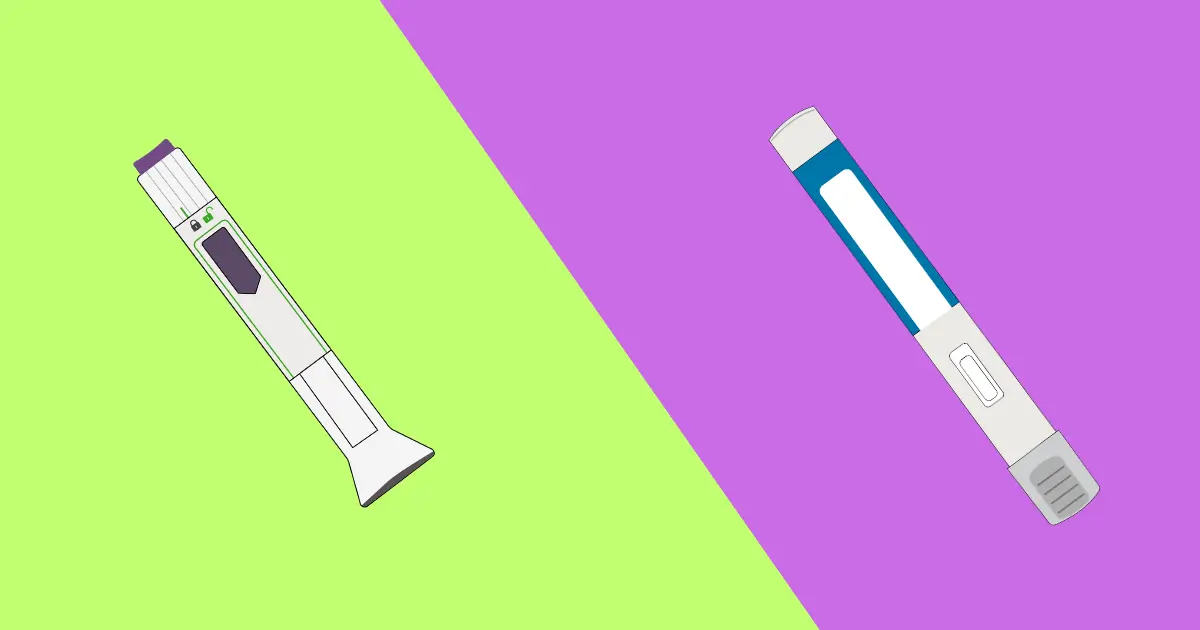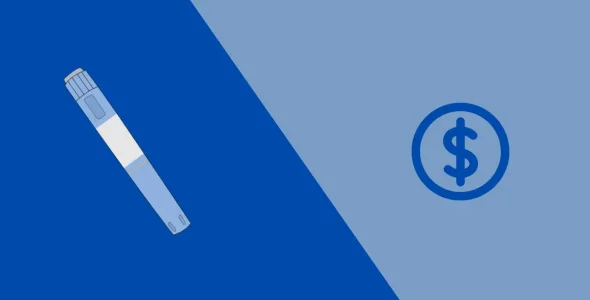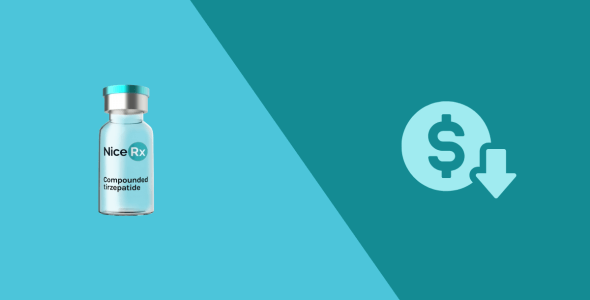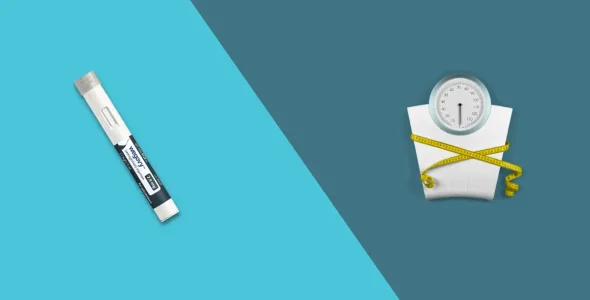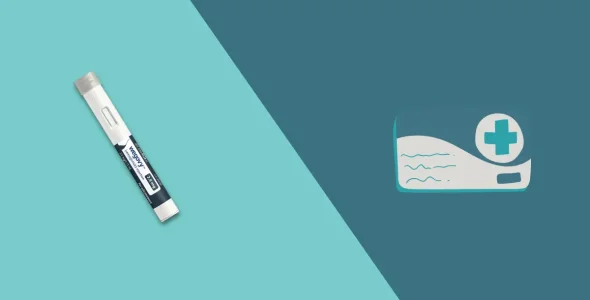Tirzepatide vs. semaglutide cost comparison and savings tips
With list prices both soaring over $1,000 per month, choosing between tirzepatide (Zepbound/Mounjaro) and semaglutide (Wegovy/Ozempic/Rybelsus) can feel like a financial decision as much as a medical one. But the 'sticker price' is almost meaningless. Your actual cost depends on a hidden web of insurance rules, pharmacy discounts, and manufacturer coupons. We're cutting through the complexity to show you what you might really pay.
Key highlights
- Tirzepatide is the active ingredient in Mounjaro and Zepbound, while semaglutide is the active ingredient in Ozempic, Wegovy, and Rybelsus.
- Mounjaro and Zepbound typically cost around $800-$1,000 per month at retail prices. Ozempic, Wegovy, and Rybelsus typically range between $800-$1,300 per month.
- Compounded tirzepatide and semaglutide prices vary by compounding pharmacy and dosage strength.
Tirzepatide and semaglutide are well-known names, mostly due to their effectiveness for weight loss. Tirzepatide is the active ingredient in Mounjaro and Zepbound, while semaglutide is the active ingredient in Ozempic, Wegovy, and Rybelsus. These are the most popular and often most expensive options in the market.
Both drugs offer impressive results for weight loss and metabolic health benefits, but their high cost often makes access a challenge.
Comparing tirzepatide vs semaglutide costs? We break down a clear side-by-side comparison of list prices, real out-of-pocket costs, insurance hurdles, and how to use savings cards to get the best prices.
Understanding semaglutide
Semaglutide, manufactured by Novo Nordisk, is the active ingredient in prescription drugs like Ozempic, Wegovy, and Rybelsus.
Ozempic and Rybelsus are approved by the U.S. Food and Drug Administration (FDA) for lowering blood sugar levels in adults with type 2 diabetes.
Wegovy is FDA-approved for chronic weight management in combination with diet and exercise for:
- People with obesity (with a BMI of 30 or higher).
- People who are overweight (with a BMI of 27 or higher) with at least one weight-related condition, such as heart disease, high blood pressure, sleep apnea, or type 2 diabetes.
- Adolescents 12 years of age and older with an initial BMI at or above the 95th percentile for age and sex.
Wegovy is also FDA-approved for reducing the risk of serious cardiovascular outcomes like heart attack in adults with obesity or overweight.
Semaglutide mimics a natural hormone called GLP-1, which helps control blood sugar by releasing insulin when you eat, lowering blood sugar levels. GLP-1 also slows down how fast food moves through your stomach (gastric emptying), making you feel full longer, and helps control appetite by lowering blood sugar levels and promoting weight loss.
Understanding tirzepatide
Tirzepatide, also known by the brand names Mounjaro and Zepbound, is an FDA-approved dual-action GLP-1/GIP receptor agonist made by Eli Lilly.
Zepbound is used for long-term weight management in adults with obesity (with a body mass index of 30 or higher) and overweight (with a body mass index of 27 or higher) with at least one weight-related condition, such as high blood pressure, type 2 diabetes, or high cholesterol.
Mounjaro was FDA-approved in 2022 for managing blood sugar levels in adults with type 2 diabetes. Tirzepatide has shown a significant reduction in HbA1c levels, a key measurement reflecting average blood glucose levels over 3 months.
Tirzepatide works by mimicking two hormones, glucagon-like-peptide-1 (GLP-1) and glucose-dependent insulinotropic polypeptide (GIP) receptors, that help your pancreas release more insulin. This dual action boosts insulin release, helps manage fat storage, makes you feel fuller longer, reduces appetite, and helps you lose body weight faster. It also helps with gastric emptying, slowing the time it takes for the stomach to empty, and interacts with areas in the brain that signal satiety.
A phase 3 trial published in N Engl J Med has also shown that tirzepatide provides improvements in people with obstructive sleep apnea (OSA).
How much do tirzepatide and semaglutide cost without insurance?
Tirzepatide is the key ingredient in the brand-name drugs Mounjaro and Zepbound, while semaglutide is the key ingredient in brand-name drugs Ozempic, Wegovy, and Rybelsus. The actual amount you pay out-of-pocket can vary depending on the pharmacy, your insurance, and where you buy it.
Mounjaro (tirzepatide) cost without insurance
According to Eli Lilly, the list price of a 28-day supply of Mounjaro auto-injector pens is $1,069 and over $12,000 annually without insurance, coupons, or financial assistance.
Zepbound (tirzepatide) cost without insurance
According to Eli Lilly, the list price of a 28-day supply of Zepbound auto-injector pens is $1,059, which amounts to about $12,000 annually without insurance, coupons, or financial assistance.
Ozempic (semaglutide) cost without insurance
The list price of Ozempic is $968.52 per month, which is about $242.13 per week or $11,622.24 per year without insurance or discounts.
Wegovy (semaglutide) cost without insurance
A 28-day supply of Wegovy costs $1,349.02 per month, which is about $337.25 per week or $16,188.24 per year.
Rybelsus (semaglutide) cost without insurance
Without insurance, a 30-day supply of Rybelsus tablets costs $968.52. That’s about $242.13 per week, $32.28 per day (since Rybelsus is taken daily), or up to $11,622.24 annually.
Tirzepatide vs. semaglutide cost and coverage comparison
Tirzepatide vs. semaglutide cost comparison
| Medication | Private/Commercial Insurance Coverage | Medicare Part D Coverage | List Price | Average Retail Price | Savings Card Program (with insurance) | Savings Card Program (without insurance) | Patient Assistance Program |
|---|---|---|---|---|---|---|---|
| Mounjaro (tirzepatide) | Varies by plan; often requires prior authorization | Not typically covered | $1,079.77 per fill | $800–$1,000 per month without insurance | Eligible patients may pay as little as $25 per month with savings card | Not Available | Not Available |
| Zepbound (tirzepatide) | Varies by plan; often requires prior authorization | Not typically covered | $1,086.37 per fill | $800–$1,000 per month without insurance | Eligible patients may pay as little as $25 per month with savings card | Eligible patients may pay $499 per month with savings card | Not Available |
| Ozempic (semaglutide) | Often covered for Type 2 diabetes; weight loss may require prior authorization | Covered for Type 2 diabetes; weight loss may not be covered | $997.58 per pen | $800–$900 per month without insurance | Eligible patients may pay as little as $25 per month with savings card | Not Available | Available for eligible patients without insurance or with limited coverage |
| Wegovy (semaglutide) | Often covered for weight loss; Type 2 diabetes may require prior authorization | Covered for weight loss; Type 2 diabetes may not be covered | $1,349.02 per package | $1,200–$1,400 per month without insurance | Eligible patients may pay as little as $25 per month with savings card | Eligible patients may pay $499 per month with savings card | Not Available |
| Rybelsus (semaglutide) | Often covered for Type 2 diabetes; weight loss may require prior authorization | Covered for Type 2 diabetes; weight loss may not be covered | Varies by dosage | $800–$900 per month without insurance | Eligible patients may pay as little as $10 per month with savings card | Not Available | Available for eligible patients without insurance or with limited coverage |
Cost of compounded tirzepatide vs. compounded semaglutide
Compounded semaglutide usually costs $200–$300 per month. The cost of compounded tirzepatide can range from about $300 to $500 per month. However, prices of both vary depending on the compounding pharmacy you use, dosage, and quantity.
These compounded versions are not FDA-approved and are not reviewed by the FDA for safety and effectiveness.
The main factors that determine your actual cost
The key factors that determine your actual cost of semaglutide or tirzepatide include:
1. Insurance coverage
Each insurance plan has a list of covered drugs, also known as a drug formulary. If your medication isn’t listed, coverage may be denied.
Some insurers require your doctor to submit paperwork proving the drug is medically necessary before approving coverage.
In some cases, your insurance provider may also require you to do step therapy, which is a requirement for you to try and fail treatment effects with a different and less expensive medication first. For example, your plan may require you to try a cheaper option first (eg. metformin) before approving a more expensive drug like tirzepatide.
2. Medicare and Medicaid coverage
By law, Medicare Part D does not cover weight-loss drugs. It may, however, cover Ozempic or Mounjaro if prescribed for the treatment of type 2 diabetes mellitus with the correct diagnosis code.
If you have Medicare, it usually doesn’t cover semaglutide for weight reduction. However, if you have Medicare Part D or a Medicare Advantage plan, Ozempic or Rybelsus may be covered for treating type 2 diabetes, depending on your plan. You can check your plan’s formulary to see if it’s covered.
For Medicaid, the coverage depends on your state. Some states cover GLP-1 medications, and you may pay a low cost or nothing at all if you’re eligible. Check with your state’s Medicaid program to find out if it covers semaglutide or tirzepatide.
3. Eligibility for manufacturer savings cards
Both manufacturers, Eli Lilly and Novo Nordisk, offer savings card programs to eligible patients. These programs exclude those with government-sponsored insurance such as Medicare, Medicare Part D, Medicare Advantage, Medicaid, Medigap, DoD, VA, any state prescription drug assistance plan, or TRICARE.
If eligible for the savings card programs, you could potentially pay as low as $0-25 per month with insurance coverage, or $499 per month without insurance.
4. Pharmacy discount programs and cash pay
If insurance denies coverage, services like GoodRx or SingleCare can help you find the lowest available cash price. These discounts don’t compare with the out-of-pocket costs through insurance coverage, but they can be lifesaving for the uninsured or underinsured.
Some patients also turn to compounding pharmacies for customized formulations or dosing. However, it’s important to know that compounded tirzepatide and semaglutide are not FDA-approved.
Tirzepatide versus semaglutide: Head-to-head clinical trials
Supporting evidence also shows greater average weight loss with tirzepatide versus semaglutide, though results vary by dose, population (with or without diabetes).
A large real-world cohort study published in JAMA compared tirzepatide and semaglutide in adults with overweight or obesity. Tirzepatide users achieved significantly greater weight loss at 3, 6, and 12 months, with over double the likelihood of reaching ≥10% weight loss. Gastrointestinal side effects were similar, though discontinuation rates were high for both drugs.
A recent head-to-head trial SURMOUNT-5, published in N Engl J Med, found that tirzepatide produced larger mean weight loss than semaglutide at the primary time point (tirzepatide ≈20.2% vs semaglutide ≈13.7%).
Another cost-effectiveness analysis published in JMCP found that tirzepatide 15 mg produced greater quality-adjusted life-years (QALYs) and delayed progression to insulin, with incremental cost-effectiveness ratios (ICERs) of about USD 54,700/QALY (15 mg) and USD 70,100/QALY (10 mg) vs semaglutide 2.0 mg.
This analysis found that tirzepatide 10 mg and 15 mg provided greater long-term health benefits than semaglutide 2.0 mg by reducing risk factors such as HbA1c and body weight. These improvements translated into fewer diabetes complications and longer quality-adjusted life years. From a payer perspective, both tirzepatide doses were considered cost-effective compared with semaglutide within common willingness-to-pay thresholds.
Understanding insurance coverage for tirzepatide and semaglutide
Many insurance plans do not cover GLP-1 RAs when they’re prescribed for weight loss. Medicare and most Medicaid programs currently exclude weight loss drugs altogether, though some may cover them when prescribed for type 2 diabetes.
Even when coverage is possible, insurers often require prior authorization. This means your doctor must submit paperwork explaining why the drug is medically necessary. Approval is not guaranteed and can delay treatment.
Coverage typically depends on the condition being treated. For example, insurers are much more likely to cover Ozempic or Mounjaro when prescribed for type 2 diabetes than to cover Wegovy or Zepbound for weight loss.
If the prior authorization is denied, your insurer will typically provide a detailed explanation, and your doctor can help address the reasons for the denial.
If you receive a denial for semaglutide or tirzepatide coverage, there are several steps you can take to appeal the decision:
- Review the denial letter: Understand why the insurance company denied the request.
- Contact your insurance provider: Speak with your insurance representative to clarify the reason for the denial. Sometimes, errors can be corrected with additional information.
- Work with your healthcare provider: Your doctor can help you appeal the denial by providing supporting documentation, such as your medical history, treatment plans, and why semaglutide is the most appropriate option for your condition. They may also submit a letter of medical necessity.
- File an appeal: Follow the formal appeal process outlined by your insurance provider. This may include submitting additional forms or documents and appealing the decision within a set timeframe with the help of your provider.
- Consider patient assistance programs: If your appeal is unsuccessful, some manufacturers or nonprofit organizations offer patient assistance programs to help with the cost of semaglutide or tirzepatide for those who qualify.
Cost savings tips for reducing out-of-pocket costs
Manufacturer savings card program
For those without insurance, Eli Lilly, through its LillyDirect direct-to-consumer platform, offers Zepbound vials for $499 per month (5 mg, 7.5 mg, 10 mg, 12.5 mg, and 15 mg) and a reduced price of $349 for the starting dose (2.5 mg). Novo Nordisk, through NovoCare Pharmacy, offers Ozempic and Wegovy for $499 per month (all doses).
Here’s a comparison of the Zepbound Savings Card, Wegovy Savings Card, Ozempic Savings Card, and Rybelsus Savings Card for those with insurance:
| Program Name | Eligible Patients | Potential Savings |
|---|---|---|
| Zepbound Savings Card | Commercially insured patients | As low as $25/month |
| Wegovy Savings Card | Commercially insured patients | As low as $0/month |
| Ozempic Savings Card | Commercially insured patients with T2D | As low as $25/month |
| Rybelsus Savings Card | Commercially insured patients with T2D | As little as $10/month |
Novo Nordisk Patient Assistance Program (PAP)
Novo Nordisk’s patient assistance program (PAP) provides free Ozempic and Rybelsus to eligible individuals. The program is completely free for those who qualify.
You can apply for the PAP if you meet the following criteria:
- You must be a U.S. citizen or a legal resident
- Your total household income should be at or less than 400% of the federal poverty level (FPL)
- You are uninsured or have Medicare
- You do not have any commercial or private insurance coverage
- You should not be enrolled in any federal, state, or government programs such as Medicaid, Veteran Affairs (VA), or low-income subsidies
If you qualify for Medicaid, you must sign the patient declaration section on the application and state that you are neither enrolled in Medicaid nor plan to enroll in Medicaid, nor are you eligible for Medicaid or Medicare Extra Help.
Steps to apply for the Novo Nordisk Patient Assistance Program
- Confirm eligibility: Check if you meet the program’s income and insurance residency requirements. If you’re unsure about eligibility, check the Novo Nordisk website or ask a health coach for assistance.
- Gather the required documents: Be ready to provide the necessary documentation, such as proof of Income (tax return, pay stubs, or government assistance statements), insurance Information (if applicable), a prescription from your healthcare provider, and proof of U.S. residency (a state-issued ID or utility bill)
- Complete the application: Visit the official Novo Nordisk PAP website and complete the online application. You may also call the Novo Nordisk Patient Assistance Program phone line to get help with the application or to receive a paper application. Fill in your personal information and income details, and attach the required documentation. Sign where required and have your healthcare provider sign where required.
- Apply: Submit the completed application online or by mailing the paper application to the address provided on the form. Your healthcare provider can also fax the completed application from their office. Ensure all required documents are included to avoid delays.
- Wait for approval: After submission, Novo Nordisk will review your application and determine your eligibility. If approved, you will be notified and will start receiving your medication for free.
- Receive medication: Upon approval, the manufacturer will ship the medication to your home or doctor’s office for you to pick up.
- Re-enrollment: The Novo Nordisk Patient Assistance Program requires annual reapplication to verify continued eligibility. The re-enrollment date will vary depending on your insurance status. Be sure to submit your re-enrollment application before your enrollment expires to continue receiving medications.
For more information or help applying to the Novo Nordisk Patient Assistance Program, you can:
- Call Novo Nordisk’s Patient Assistance Program toll-free at 1-866-310-7549
- Visit their official website: Novo Nordisk Patient Assistance Program
- Speak with your doctor’s office, as they can assist you with the application process
Pharmacy discount cards
Semaglutide coupons and discounts
Apart from manufacturer-specific programs like the Novo Nordisk Patient Assistance Program, there are other ways to access semaglutide (Ozempic, Wegovy, and Rybelsus) at discounted prices. These options include third-party discount cards, pharmacy-specific deals, and online savings programs.
Here are some reputable websites that offer semaglutide coupons and discounts for Ozempic, Wegovy, and Rybelsus:
- GoodRx: A well-known platform that allows you to compare prescription prices at local pharmacies and provides discounts of up to 80% off the retail price.
- SingleCare: Provides prescription savings cards that can be used at thousands of pharmacies across the U.S. for discounts on medications with discounts of up to 80% off the retail price.
- WellRx: Provides a free prescription discount card that offers savings on medications like semaglutide with a discount of up to 80%.
- Optum Perks: A prescription savings card that can be used at many pharmacies across the U.S. with a discount of up to 80%.
Tirzepatide coupons and discounts
If you’re looking for other ways to save on tirzepatide, consider checking online coupon websites that offer pharmacy discount cards, regardless of your insurance status. These websites provide useful resources to help lower your out-of-pocket costs, even if you don’t have insurance or your insurance doesn’t cover the medication.
- GoodRx: Offers prescription discounts at participating pharmacies, including CVS, Walgreens, Walmart, and Rite Aid. You can check for specific savings based on your location and pharmacy.
- SingleCare: Similar to GoodRx, SingleCare provides discount cards that can be used at various pharmacies to help reduce the cost of medications like tirzepatide.
- RxSaver: This platform offers discounts on medications, including tirzepatide, at participating pharmacies near you.
- WellRx: Another website where you can search for discounts on your prescriptions.
Tirzepatide versus semaglutide: What’s the difference?
The main difference between tirzepatide and semaglutide is that they are the key ingredients used in different weight loss medicines. Tirzepatide is sold as Mounjaro and Zepbound, while semaglutide is sold as Ozempic, Wegovy, and Rybelsus. They also belong to different drug classes, have different doses, and are prescribed for different uses.
Drug class
Tirzepatide and semaglutide belong to slightly different drug classes. Semaglutide works as a glucagon-like peptide-1 receptor agonist (GLP-1 receptor agonist), while tirzepatide works on both glucose-dependent insulinotropic polypeptide (GIP) and GLP-1 receptor agonists. Tirzepatide is often referred to as a “dual agonist” drug.
FDA-approval
When compared directly, tirzepatide and semaglutide work in a similar way. They mimic natural hormones that help the body produce insulin, control blood sugar, and reduce appetite. However, each brand-name drug is approved by the FDA for slightly different uses.
FDA approvals for tirzepatide:
- Mounjaro (tirzepatide) is FDA-approved to help manage blood sugar levels in people with type 2 diabetes.
- Zepbound (tirzepatide) is FDA-approved for chronic weight management in adults with obesity and for adults who are overweight and have at least one related health issue, like high cholesterol or high blood pressure, as well as for treating obstructive sleep apnea in adults with obesity.
FDA approvals for semaglutide:
- Ozempic (semaglutide) is FDA-approved to treat adults with type 2 diabetes. It’s also approved to lower the cardiovascular risk in people who have both type 2 diabetes and cardiovascular disease. More recently, the FDA approved it to reduce the risk of kidney failure and heart-related death in adults with comorbidities like type 2 diabetes and chronic kidney disease.
- Wegovy (semaglutide) is FDA-approved to help with long-term weight management in adults and in teens 12 and older with obesity. It’s also approved for adults who are overweight with at least one related health issue, and to lower the risk of heart problems in adults with heart disease who have obesity or are overweight.
Rybelsus (semaglutide) is FDA-approved to treat adults with type 2 diabetes.
Dosage and forms
Tirzepatide and semaglutide differ in their forms and usual doses. Both can be taken as once-weekly subcutaneous injectables, but only semaglutide is also available as an oral pill (Rybelsus).
Tirzepatide is an injection that is usually started at a lower dose of 2.5 mg once a week. After four weeks, the dose can be slowly increased every 4 weeks by 2.5 mg dosage increments up to a maximum of 15 mg weekly. This step-by-step increase helps the body adjust, improves blood sugar control, and reduces stomach-related side effects.
Semaglutide injection also begins at a lower dose of 0.25 mg once a week. After four weeks, the dose increases to 0.5 mg weekly, and if needed, can be increased further up to a maximum of 2.4 mg weekly. This gradual approach helps manage adverse events and makes it easier for patients to stay on the medication long term.
Weekly doses of tirzepatide are generally higher than the maximum once-weekly semaglutide doses. The maximum dosages for Zepbound and Mounjaro are 15 mg, while Ozempic is 2 mg, Wegovy is 2.4 mg, and Rybelsus (oral) is 14 mg.
Does insurance cover tirzepatide and semaglutide?
Insurance coverage for tirzepatide
The cost of tirzepatide with insurance can vary depending on the coverage details of your health insurance plan, including the type of plan, drug formulary, and the tier that tirzepatide falls under.
Insurance plans typically categorize medications into different tiers, and each tier comes with a different cost-sharing requirement (copays or coinsurance). Some insurance plans may cover tirzepatide as a preferred medication, which could lower your out-of-pocket costs, while tirzepatide may be placed on a higher drug tier, which could mean higher out-of-pocket costs, especially if it is considered a specialty medication.
Some insurance plans may also require prior authorization before approving coverage for tirzepatide. This means that your healthcare provider may need to submit additional documentation to justify the medical need for the medication, proving it is the most appropriate treatment for your medical condition.
Insurance coverage for these drugs depends on your plan. Most plans only cover tirzepatide when it’s prescribed for FDA-approved uses. For example, Medicare and Medicaid may cover Mounjaro for type 2 diabetes, and in some cases, Zepbound for sleep apnea, but they’re less likely to cover Zepbound for weight loss.
Medicare currently does not cover tirzepatide for weight loss. However, Medicare Part D (prescription drug plans) may cover tirzepatide for treating type 2 diabetes, but this depends on the specific plan and whether tirzepatide is included in the formulary.
There is a proposal to allow Medicare to cover weight loss drugs for the treatment of obesity, so the coverage exclusion may be removed in the future.
The Medicare Plan Finder tool can help you find a Medicare plan that covers your specific medications.
Medicaid coverage for tirzepatide can vary by state and Medicaid plan. Some state Medicaid programs may cover tirzepatide for eligible individuals with type 2 diabetes or weight loss, while others might not include it on their formulary.
If you have insurance coverage for Mounjaro or Zepbound, you could pay as little as $25 per month if eligible for the manufacturer’s savings card program.
In cases where it’s not covered, you can ask your healthcare provider to submit a drug exception request or explore other options like pharmacy discount cards to help reduce the cost.
Insurance coverage for semaglutide
The cost of semaglutide with insurance can vary depending on the details of your health insurance plan, including the type of plan, your drug formulary, and the tier that semaglutide falls under.
Insurance plans typically categorize medications into different tiers, and each tier comes with a different cost-sharing requirement (copays or coinsurance). Semaglutide may be placed on a higher drug tier, which could mean higher out-of-pocket costs, especially if it is considered a specialty medication.
Some insurance plans may also require prior authorization before approving coverage for semaglutide. This means that your healthcare provider may need to submit additional documentation to justify the medical need for the medication, proving it is the most appropriate treatment for your condition (such as type 2 diabetes).
If the prior authorization is denied, your insurer will typically provide a detailed explanation, and your doctor can help address the reasons for the denial.
Insurance coverage for semaglutide depends on your plan. Many plans, including Medicare and Medicaid, are more likely to pay for semaglutide when it’s prescribed for diabetes than for weight loss.
Medicare Part D drug plans and Medicare Advantage Prescription Drug Plans (MA-PD) do not cover weight loss drugs. If semaglutide is prescribed for type 2 diabetes, it would most likely be covered. Coverage varies by plan and medical necessity. The price will depend on your plan’s copay and whether you’ve met your deductible.
Currently, no Medicare plans, including original Medicare or Medicare Advantage, can cover medication prescribed for weight loss due to a legal prohibition. A bill in the U.S. Congress could change this in the future, and some organizations are working to get it passed.
Each state decides which drugs are covered by Medicaid. To see if semaglutide is covered in your area, check your health insurance plan’s list of covered drugs or contact your state Medicaid agency. You must also meet the income requirements set by your state to qualify for coverage.
Currently, five states offer unrestricted Medicaid coverage for Wegovy, and four states offer restricted coverage with prior authorization.
If you have insurance coverage for Ozempic or Wegovy, you could pay as little as $25 per month with the Ozempic Savings Card program, or as little as $0 per month with the Wegovy Savings Card program.
If the prior authorization request is denied for any of the drugs, your insurer will typically provide a detailed explanation. There are several steps you can take to appeal the decision:
- Review the denial letter: Understand why the insurance company denied the request.
- Contact your insurance provider: Speak with your insurance representative to clarify the reason for the denial. Sometimes, errors can be corrected with additional information submitted by your provider.
- Work with your healthcare provider: Your doctor can help you appeal the denial by providing supporting documentation, such as your medical history, treatment plans, and why tirzepatide is most appropriate for your health condition. They may also submit a letter of medical necessity.
- File an appeal: Follow the formal appeal process outlined by your insurance provider. This may include your provider submitting additional forms or documents and appealing the decision within a set timeframe with the help of your provider.
Safety, adverse events, and how they factor into which medication may be right for you
Common side effects of semaglutide and tirzepatide include:
- Nausea
- Vomiting
- Diarrhea
- Stomach pain
- Decreased appetite
- Indigestion
- Belching
- Constipation
- Headache
- Risk of low blood sugar
Semaglutide and tirzepatide can cause serious side effects such as pancreatitis (inflammation of the pancreas), gallbladder problems, changes in vision, serious allergic reactions, and kidney issues. Higher doses of both medications are known to cause more severe side effects.
Both of them can also cause low blood sugar (hypoglycemia), especially if you are taking other diabetes medications. Over time, this can lead to episodes of hypoglycemia, which need careful management, so monitor your blood sugar levels regularly.
Semaglutide and tirzepatide have a black box warning from the FDA for the risk of thyroid tumors or medullary thyroid carcinoma (MTC).
You should not use Semaglutide or tirzepatide if you are pregnant, planning to become pregnant, or are breastfeeding.
FAQ’s
Is tirzepatide cheaper than semaglutide?
Tirzepatide and semaglutide have similar list prices, often both over $1,000 per month, with tirzepatide sometimes slightly higher. However, the cost-effectiveness of tirzepatide is higher because tirzepatide may produce greater average weight loss. Actual out-of-pocket costs depend heavily on insurance coverage and manufacturer savings programs.
Can I get these drugs for free?
In some cases, yes, you may qualify for free access through manufacturer assistance programs, certain Medicare Advantage plans, or comprehensive insurance coverage. For example, Novo Nordisk’s Patient Assistance Program can provide Ozempic or Rybelsus at no cost for U.S. residents who meet income and insurance requirements. Eligibility depends on your financial situation and insurance status.
Should I pick by price or efficacy?
It’s best to weigh both price and efficacy. If a drug offers significantly better results for your health, the higher cost may still be worthwhile. Your healthcare provider can help match the best option to your medical needs and financial situation.
Conclusion
Tirzepatide and semaglutide are expensive drugs without insurance coverage, but savings options are available. There are several options to save on your tirzepatide and semaglutide prescription, with manufacturer savings cards being the best option for significant savings.
Insurance coverage varies and often needs prior approval. Manufacturer coupons and discount programs can help make these drugs more affordable.
Choosing the right medication depends on your health needs, effectiveness, side effects, and cost.
Always work with a healthcare professional to find the best treatment plan and manage your medical costs.
